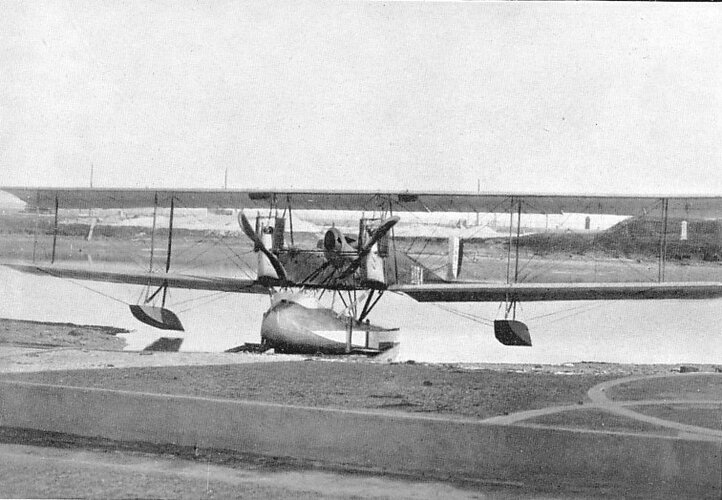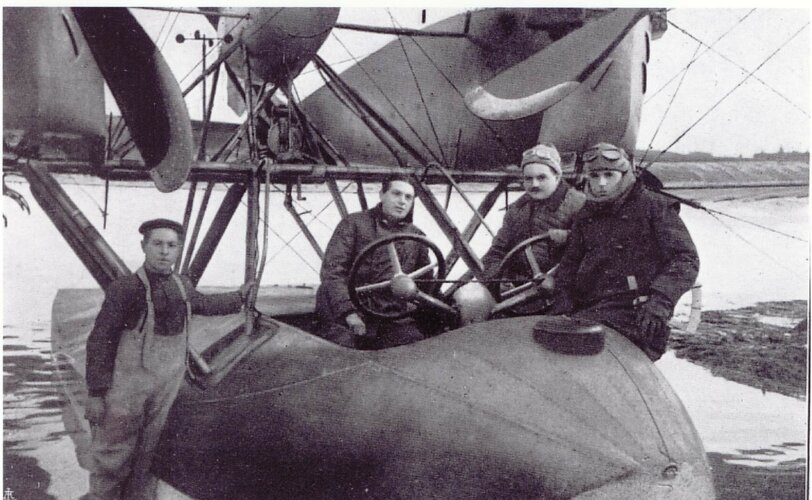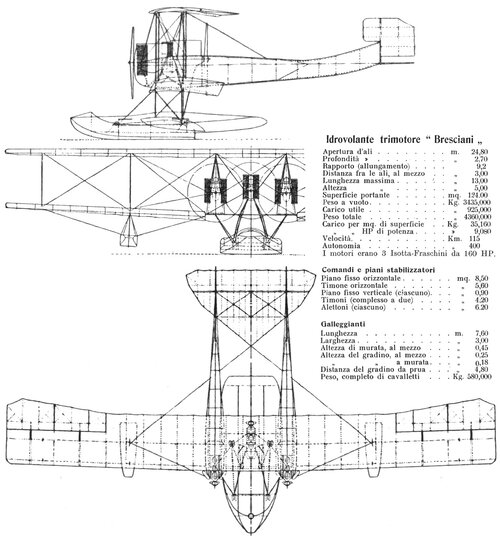- Joined
- 26 May 2006
- Messages
- 32,686
- Reaction score
- 11,909
Here is all story for this seaplane;
At the beginning of 1916 the Austro-Hungarian aviation could boast the supremacy of the skies and
was difficult to counter both for the quality of the available means and for the difficulty of reaching
and effectively hitting the bases from which it operated. The Royal Navy immediately realized the
need to have a large bomber available, just as the Army had already done with the construction of
the Caproni heavy bombers. Since the army had priority in construction, the Navy had to meet this
need with the intervention of army bomber squadrons.
To equip himself better and more quickly with these bombers he commissioned Eng. Bresciani to modify
five Caproni three-engine boats to make them suitable for maritime use. The transformation had to be
carried out at the SVAN shipyard in Venice. Bresciani, who in the development of the project made use
of the collaboration of the Captain of the Naval Engineers Eng. Roberto Prunas, instead of simply replacing
the trolley with floats, modified the aircraft to such an extent that he obtained a completely different model,
which had in common with the Caproni only the three-engine formula with two-beam fuselage. Thus was born
a large truncated central hull seaplane in which the crew could be accommodated and connected to the biplane
wing structure by means of a metal frame. At this point Bresciani realized the need to have adequate power and
the most powerful engines available at that time were mounted: three 150hp Isotta Fraschini V 4Bs. The Bre.1,
as the new aircraft was called, was armed at the bow with a 25 mm cannon. and aft in the turret with a machine
gun. The bomb load could be about 1,000 kg. And the range of about 400 km. The tests carried out since the
end of 1915 demonstrated the valid characteristics of the aircraft, which are easy to handle and well centered.
The plane immediately fueled great hopes in the Navy, suggesting the possibility of setting up several flocks
for maritime bombardment. Work had already been decided to prepare the bases of Varano and Brindisi to
house the large Brescian seaplanes. Unfortunately, the project, as we shall see later, suffered a dramatic
arrest.
At the beginning of 1916 the Austro-Hungarian aviation could boast the supremacy of the skies and
was difficult to counter both for the quality of the available means and for the difficulty of reaching
and effectively hitting the bases from which it operated. The Royal Navy immediately realized the
need to have a large bomber available, just as the Army had already done with the construction of
the Caproni heavy bombers. Since the army had priority in construction, the Navy had to meet this
need with the intervention of army bomber squadrons.
To equip himself better and more quickly with these bombers he commissioned Eng. Bresciani to modify
five Caproni three-engine boats to make them suitable for maritime use. The transformation had to be
carried out at the SVAN shipyard in Venice. Bresciani, who in the development of the project made use
of the collaboration of the Captain of the Naval Engineers Eng. Roberto Prunas, instead of simply replacing
the trolley with floats, modified the aircraft to such an extent that he obtained a completely different model,
which had in common with the Caproni only the three-engine formula with two-beam fuselage. Thus was born
a large truncated central hull seaplane in which the crew could be accommodated and connected to the biplane
wing structure by means of a metal frame. At this point Bresciani realized the need to have adequate power and
the most powerful engines available at that time were mounted: three 150hp Isotta Fraschini V 4Bs. The Bre.1,
as the new aircraft was called, was armed at the bow with a 25 mm cannon. and aft in the turret with a machine
gun. The bomb load could be about 1,000 kg. And the range of about 400 km. The tests carried out since the
end of 1915 demonstrated the valid characteristics of the aircraft, which are easy to handle and well centered.
The plane immediately fueled great hopes in the Navy, suggesting the possibility of setting up several flocks
for maritime bombardment. Work had already been decided to prepare the bases of Varano and Brindisi to
house the large Brescian seaplanes. Unfortunately, the project, as we shall see later, suffered a dramatic
arrest.



